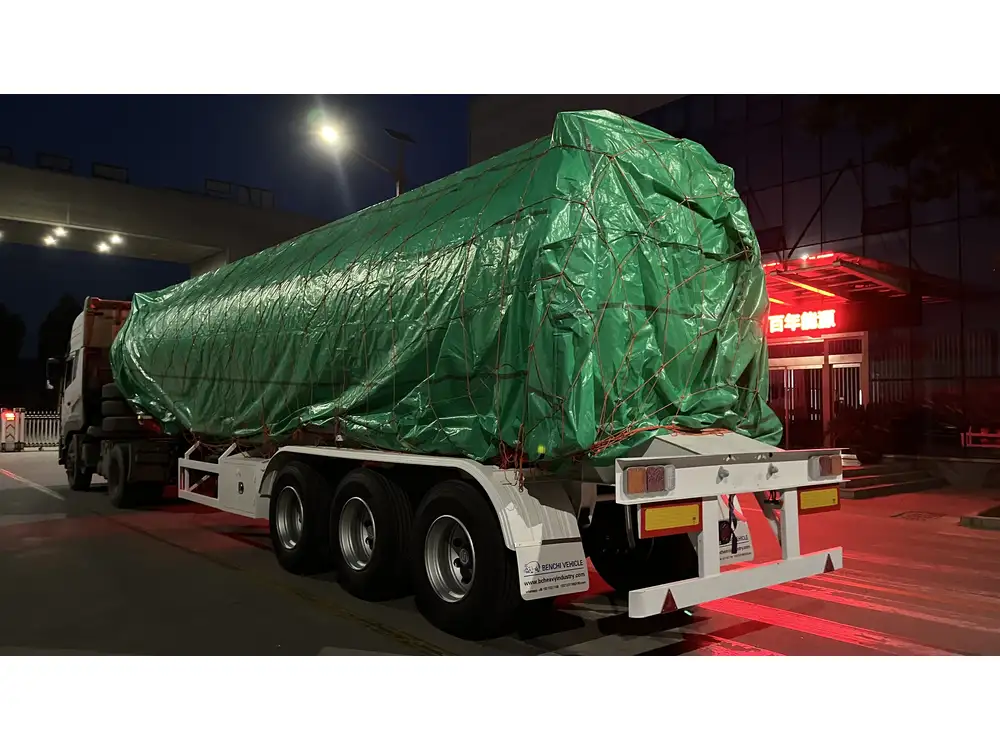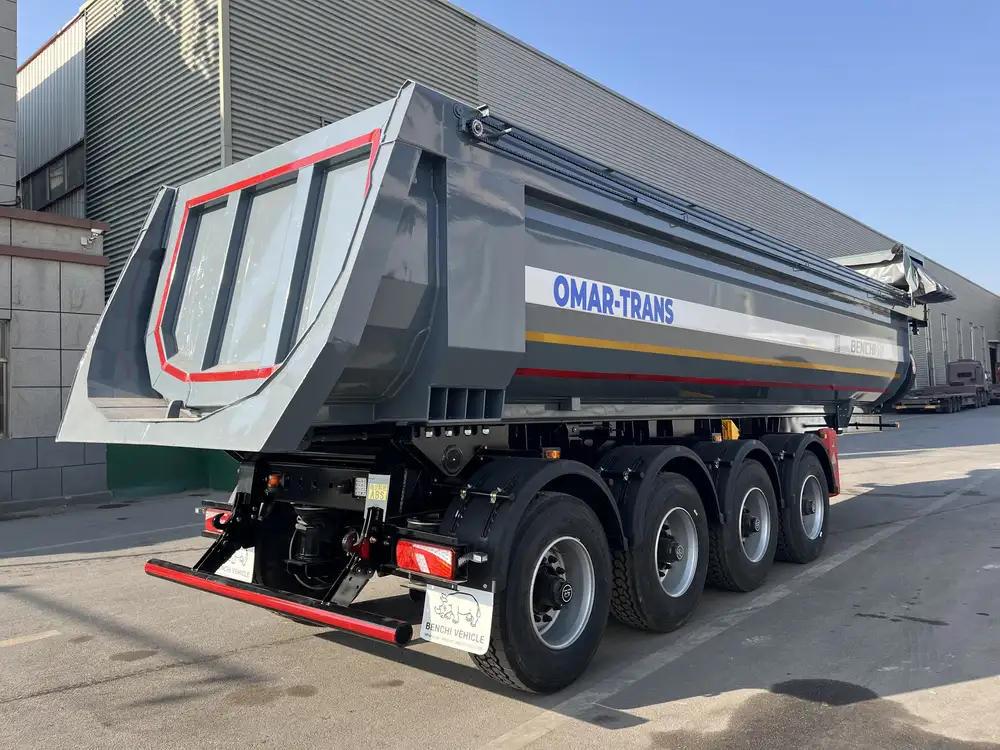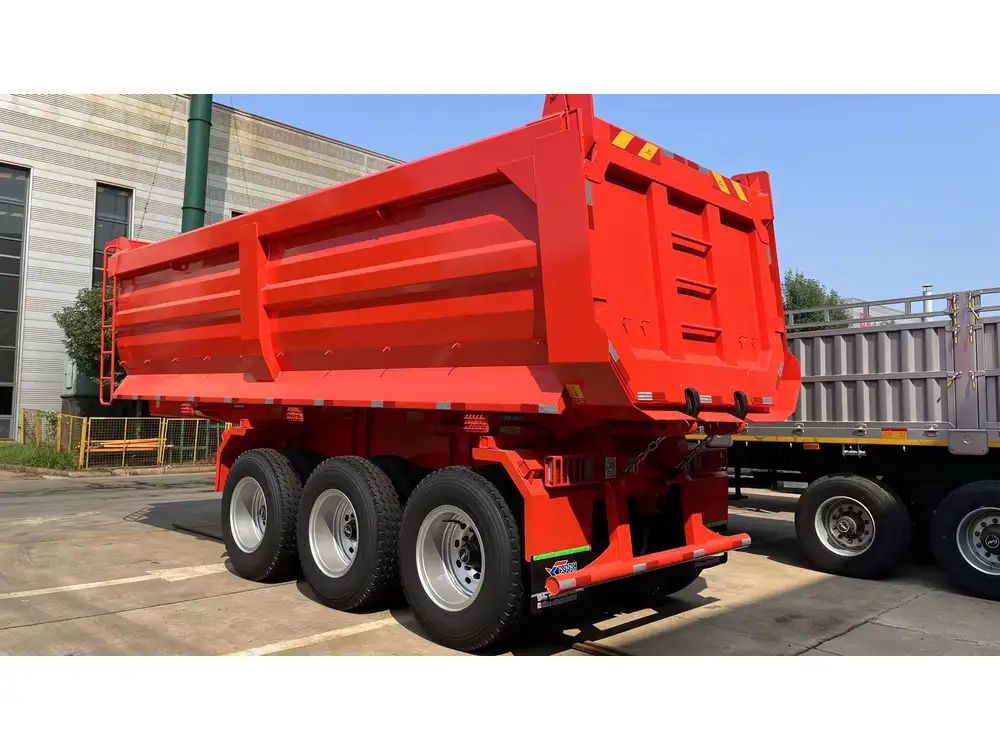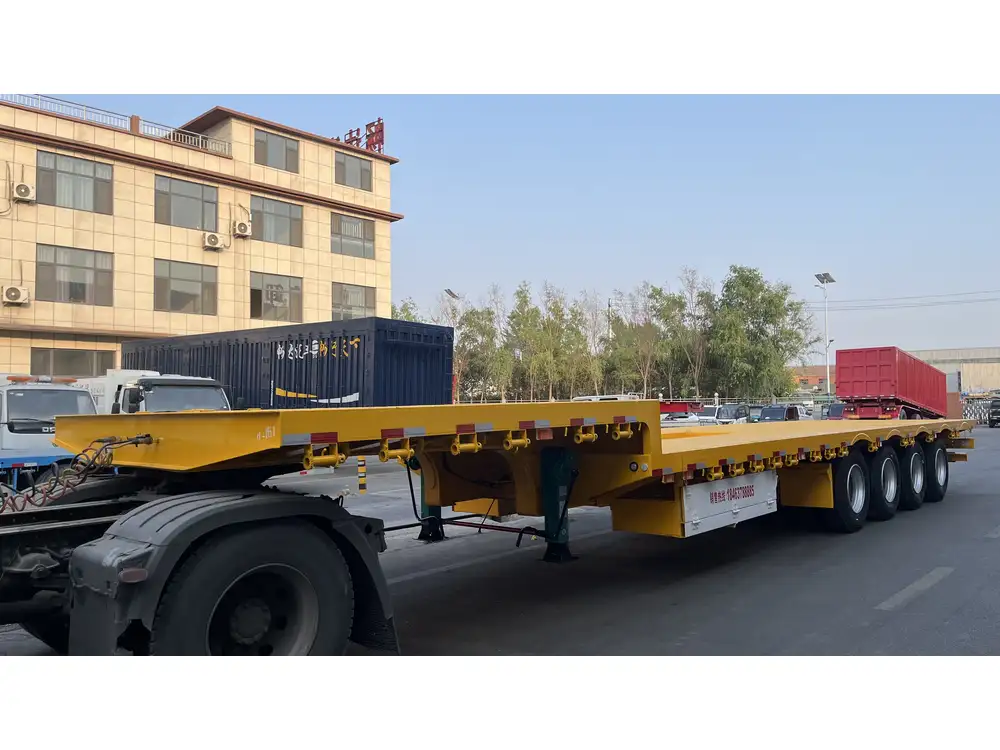What is a Semi-Trailer?
A semi-trailer, an essential component in the transportation and logistics industry, is a type of trailer that partially supports its own weight while being towed by a vehicle, commonly known as a tractor or truck. Unlike standard trailers that have wheels and a front axle, semi-trailers rely on the truck’s cab for support, which gives them a unique aerodynamic advantage, reduces drag, and improves fuel efficiency.
Structure and Design of a Semi-Trailer
Semi-trailers typically feature a flat bed structure that allows for the transportation of various goods, including containers, vehicles, machinery, and raw materials. The design includes:
- Chassis: This rigid frame supports the trailer’s load and includes several structural components.
- Axles and Wheels: Different configurations exist, usually featuring two or more axles, which significantly affect load capacity and stability.
- Loading Mechanism: Many semi-trailers are equipped with ramps or hydraulic lifts to facilitate the easy loading and unloading of goods.

Types of Semi-Trailers
The versatility of semi-trailers is reflected in the various types available, each designed to meet specific transportation needs. Here’s an overview of some of the most common types:
| Type of Semi-Trailer | Description | Typical Uses |
|---|---|---|
| Flatbed Semi-Trailer | Open design with no sides or roof | Construction materials, heavy machinery |
| Dry Van | Enclosed trailer, protects cargo from elements | General freight, retail goods |
| Refrigerated Trailer (Reefer) | Insulated with refrigeration units | Perishable goods, food, pharmaceuticals |
| Tanker Trailer | Designed to transport liquids | Fuel, chemicals, milk |
| Lowboy Trailer | Low profile, detachable gooseneck | Heavy and oversized equipment |
| Curtain Side | Sides open like curtains for easy access | Versatile cargo, quick loading/unloading |
Key Components of a Semi-Trailer
Understanding the key components of semi-trailers is critical for manufacturers and buyers alike. Here are the fundamental elements that define the efficacy and performance of a semi-trailer:
- Kingpin: The pivot point where the tractor connects to the semi-trailer.
- Landing Gear: Adjustable legs that support the trailer when not attached to a truck.
- Braking System: Typically air or hydraulic brakes that ensure safe stopping under heavy loads.
- Suspension System: Important for maintaining stability and comfort while on the road.
- Cargo Securing Devices: Includes straps, chains, and pallets to ensure load security during transit.
Advantages of Using Semi-Trailers
When considering logistics and transportation solutions, numerous advantages are associated with the utilization of semi-trailers:

Higher Load Capacity
Semi-trailers can accommodate heavier loads compared to standard trailers. The design allows for a higher weight distribution which is particularly beneficial for industries that require the transport of large quantities of goods.
Versatility in Transport Solutions
Different types of semi-trailers cater to various cargo needs. From flatbeds for construction materials to reefers for frozen goods, the adaptability of semi-trailers enhances operational efficiency across sectors.
Enhanced Fuel Efficiency
The aerodynamic shape of most semi-trailers reduces air resistance, resulting in better fuel consumption. This aspect becomes particularly crucial as logistics companies seek to lower operational costs.

Longevity and Durability
Built from materials designed to withstand harsh weather and heavy use, semi-trailers offer a longer lifespan, making them a sound investment for transportation companies.
Choosing the Right Semi-Trailer
Selecting the appropriate semi-trailer depends heavily on the type of cargo being transported. Here are some key factors to consider when making your choice:
Cargo Type: Evaluate the dimensions, weight, and special requirements of the cargo—does it require refrigeration or special handling?
Regulatory Compliance: Ensure that the semi-trailer meets local and federal regulations related to weight limits, emissions, and safety.
Load Distribution: Consider the weight distribution over axles. This impacts handling and can influence whether you need a multi-axle setup.
Budget: Factor in both upfront costs and long-term maintenance expenses. For some businesses, leasing a semi-trailer can be a more cost-effective option than purchasing outright.
Common Issues Faced by Semi-Trailer Operators
Operating semi-trailers comes with its own set of challenges. Understanding these can help manufacturers design solutions that enhance performance and safety.

Maintenance and Repair Challenges
Like any heavy-duty equipment, semi-trailers require regular maintenance to ensure optimal performance. Common issues include:
- Tire Wear: Frequent inspections are necessitated due to the high weight loads.
- Brake System Maintenance: Essential for ensuring safety, brake systems must be frequently tested and serviced.
- Structural Integrity: Regular inspections for wear and tear can prevent dangerous malfunctions.
Compliance with Regulations
Operators must stay compliant with various regulations regarding weight limits, emissions, and safety features. Failure to comply can result in fines, safety hazards, and downtime.
Loading and Unloading Time
Inefficient loading and unloading processes can affect overall logistics. Streamlining these processes through better training or innovative designs can mitigate such delays.

Improving Efficiency with Advanced Technology
The integration of technology into semi-trailer operations is rapidly transforming the industry. Here are some advancements worth considering:
GPS Tracking Systems
Equipping semi-trailers with GPS technology allows for real-time tracking of shipments, enhancing transparency, and efficiency in logistical operations.
Advanced Braking Systems
Many manufacturers are adopting advanced automated braking systems that offer improved safety features, a crucial need in today’s logistics environment.

Load Automation Technology
Automating the loading and unloading processes using hydraulic systems and conveyor belts can greatly reduce turnaround times and labor costs.
Telematics Solutions
Telematics allows for data collection on vehicle performance, helping operators understand fuel efficiency, maintenance needs, and driver behavior.
Understanding the Future of Semi-Trailers
As the transportation industry continues to evolve, so too will the design and functionality of semi-trailers. Here are emerging trends likely to influence future semi-trailer development:

Sustainability Initiatives
Increasing environmental concerns will push manufacturers to explore eco-friendly materials and designs, along with innovations that enhance fuel efficiency and reduce emissions.
Electric and Alternative Fuel Trailers
With a global shift towards sustainability, the development of electric semi-trailers and those utilizing alternative fuels (like hydrogen) will become more prevalent.
Enhanced Safety Features
Future semi-trailers are likely to incorporate more advanced safety technologies, including collision avoidance systems, autonomous driving capabilities, and improved visibility setups.

Conclusion
Semi-trailers represent a vital component in the logistics and transportation sector, providing a flexible and efficient means for transporting goods. By understanding their design, types, operational advantages, and emerging technologies, operators and manufacturers can optimize their logistics processes and contribute toward a more sustainable future.
Through concrete decisions driven by analysis and innovation, we can navigate the complexities of the transportation market and keep pace with the growing demands of global commerce. With the right semi-trailer, businesses can enhance operational efficiency, maximize payload capacity, and ensure compliance with regulatory standards while maintaining the highest levels of safety.



